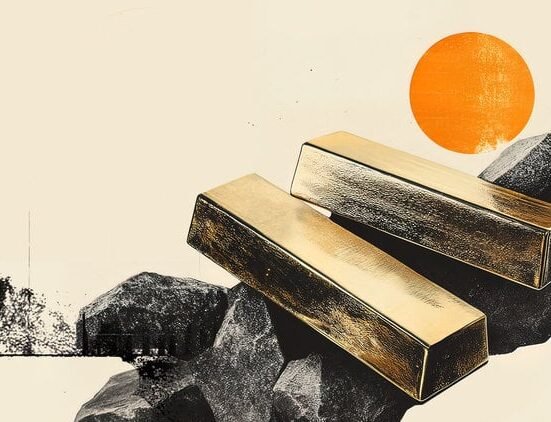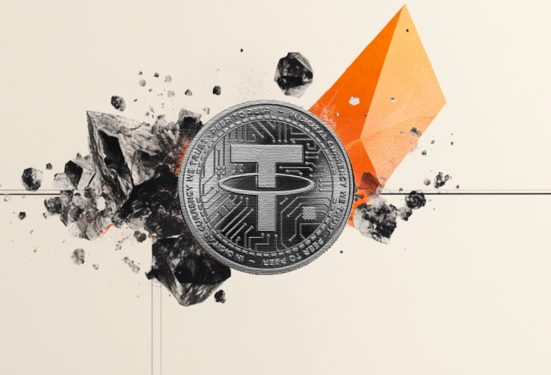By Myra P. Saefong
‘I buy it as a kind of fun way to enjoy the gold you own’: Gold jewelry can increasingly be appealing for investors
Gold has reached a price that incentivizes not just investors, but maybe even you or your grandmother to dig through old jewelry boxes to find traces of the precious metal that are worth more than 20 times their value compared to 50 years ago.
You might find gold coins or bullion bars – but jewelry is probably the most common form of gold that people keep in their homes. Gold jewelry, after all, has sentimental value for many families as it’s passed down from generation to generation. It’s also something tangible that can be worn and displayed to exhibit beauty and flaunt wealth – and that can be appealing for investors, young and old.
California-based precious-metals investor Chris Hagler began buying gold in 2017, starting with bullion coins, but “gold investment jewelry” then piqued his interest.
“I buy it as a kind of fun way to enjoy the gold you own,” and it makes for a great gift, he told MarketWatch.
Commonly, gold purity in jewelry ranges from 10 karat, or roughly 42% purity, to as much 24 karat, or essentially 100% purity. At that highest level of purity content, gold is known as “investment jewelry” or “bullion jewelry.”
This form of gold is generally defined as a type of jewelry, often made with a higher gold content than other types, purchased with the expectation that it will hold its value, or may gain in value, over time.
It’s jewelry that is “mostly worth what you pay for it because its price is mostly derived from the gold it contains,” said Stefan Gleason, president and chief executive at Money Metals, a bullion dealer that buys and sells precious metals. This investment-grade jewelry is usually 24-karat gold and can be sold or melted without much loss in value, making it “more liquid as an investment or store of value,” he said.
Record-high gold prices
With current prices of gold near record highs, gold investment jewelry can be an impressive store of value. Gold futures on Comex (GC00) (GCM25) briefly touched $3,509.90 on April 22, their highest on record. They’ve fallen back to settle at $3,347.70 on Monday.
With high prices, jewelry is “usually a component of the increased supply of gold, which shows up in increased levels of recycling,” said Joe Cavatoni, senior market strategist at the World Gold Council, the international trade association for the gold industry. That increased supply is mostly jewelry sold for cash, melted and recycled.
In 2024, there was an 11% increase in recycled gold supply, said Cavatoni, adding that the WGC also expects that climb to continue in the first quarter of 2025, though official data isn’t out quite yet.
With higher prices, there tend to be declines in demand for jewelry in the gold market because it’s so expensive, said Cavatoni. That’s especially true for markets where gold jewelry is seen as a “pure consumer play.”
In places such as China and India, where gold jewelry is purchased by consumers and investors alike, there’s been a decline in demand due to current high prices, he said. The WGC expects that to continue, and fabrication of jewelry, along with inventory levels, are also likely to decline.
It’ll take time for high gold prices to settle in and for consumer behavior to “adapt” to those new price points, Cavatoni said. “Once confidence is on the rise, there is a good track record of demand coming back.”
Jewelry as an investment
The concept of investment jewelry is not new, said Money Metals’ Gleason.
It may seem novel here in the U.S., but the idea that jewelry can double as an investment is commonplace in countries such as India, where jewelry is valued mostly based on its actual metal content, and has been a form of savings or investment, he said.
That differs from the U.S., where virtually most of the jewelry sold is of low purity and “dramatically marked up from its actual metal value and is usually far from pure gold,” said Gleason. Much of the gold jewelry sold in the U.S. is 14K, or around 58% purity, which makes it more durable for everyday wear. But “it’s a terrible value – and the money spent can hardly be recovered,” Gleason said.
Money Metals Exchange sells 22K and 24K gold jewelry, and sales of investment jewelry on its website climbed by 30% in the first quarter of this year from the same quarter a year ago, according to Gleason.
He said most of the bullion jewelry his company sells is priced for retail at 20% to 50% over the actual gold value, depending on the item, size and design complexity, and manufacturing costs.
The lighter jewelry items tend to be more popular, said Gleason, “partly because they are mostly priced based on weight.” Among those are a 3.5-gram, 24K heart-shaped gold charm currently priced at $632.90, and 5.4-gram, 24K water droplet-shaped gold earrings for $942.63.
Retailers
Nebü designs and crafts some of the investment-grade gold jewelry Money Metals sells on its website. Other companies that sell high gold-purity jewelry include Mene and Auvere.
Nebü has a return customer rate of about 30% and has grown 60% year on year, on average, “relatively organically with little or no marketing spend,” CEO Helen Viljoen told MarketWatch.
The company has been selling investment jewelry since 2021 and distributes its products directly to the market and through some of America’s largest, reputable bullion dealers.
Roy Sebag, founder and CEO of bullion dealer Goldmoney, founded investment-jewelry company Mene in 2017 and currently serves as its chairman. He told MarketWatch that Mene has sold over 100,000 pieces of jewelry for around $120 million since its launch. That same jewelry owned by clients in over 60 countries is worth over $250 million at today’s precious-metal prices, he said.
“Pure metal investment through jewelry is a really democratic way to get people interested and knowledgeable about gold as an investment because you can purchase a small piece from Mene at a very reasonable price,” said Sebag. What you get is “value in a precious metal that appreciates over time.”
At Auvere, founder and designer Gina Love said her company’s goal wasn’t to create jewelry for investment purposes, but the nature of the metals used to create its pieces “imbues them with investment qualities.”
“Pure bullion and sovereign coins offer straightforward investment benefits – including maximum liquidity, 99.99% purity and minimal premiums above spot price,” she said. Auvere’s 18K, 22K and 24K jewelry, however, provides “something fundamentally different: the daily pleasure of wearing beautiful, high-karat gold.”
Rather than dampening interest, the higher price points for gold have “highlighted the appeal of owning jewelry that offers both aesthetic pleasure and material worth,” Love said. Customers have continued to acquire Auvere’s pieces even as gold market values rise, she said.
‘Reasonable investment’
Still, more recently, tariffs have come into play when in comes to manufacturing costs, said Money Metals’ Gleason.
While gold is exempt from President Donald Trump’s tariffs on U.S. imports, “jewelry is not – and almost all of this kind of jewelry is manufactured outside of the U.S.,” Gleason said.
That said, he would not consider bullion jewelry to be an “investment alternative” to gold bullion bars or bullion coins, which have a lower price premium compared with gold jewelry.
“If you want to combine aesthetic beauty and functionality with something that’s a reasonable investment,” then gold bullion jewelry is a good choice.Stefan Gleason, Money Metals
Still, “if you want to combine aesthetic beauty and functionality with something that’s a reasonable investment, then this is a good choice,” Gleason said.
Hagler, the precious-metals investor, said investment jewelry can help investors “diversify” their physical gold holdings from typical coins and bars, into something that can be worn and still act as a “wealth-preservation tool.”
-Myra P. Saefong
This content was created by MarketWatch, which is operated by Dow Jones & Co. MarketWatch is published independently from Dow Jones Newswires and The Wall Street Journal.
(END) Dow Jones Newswires
04-29-25 0900ET
Copyright (c) 2025 Dow Jones & Company, Inc.







